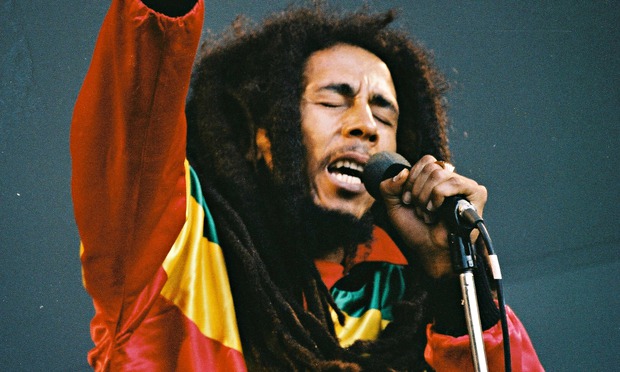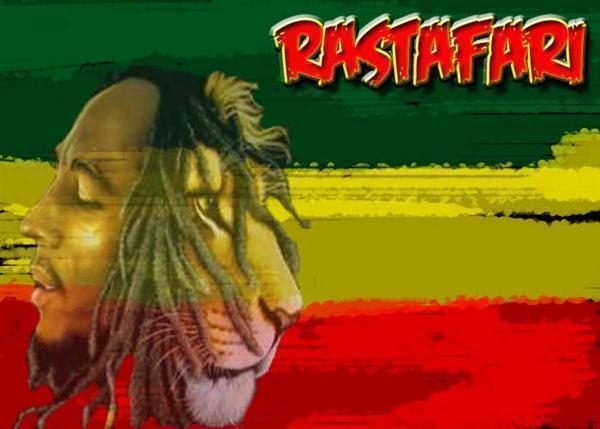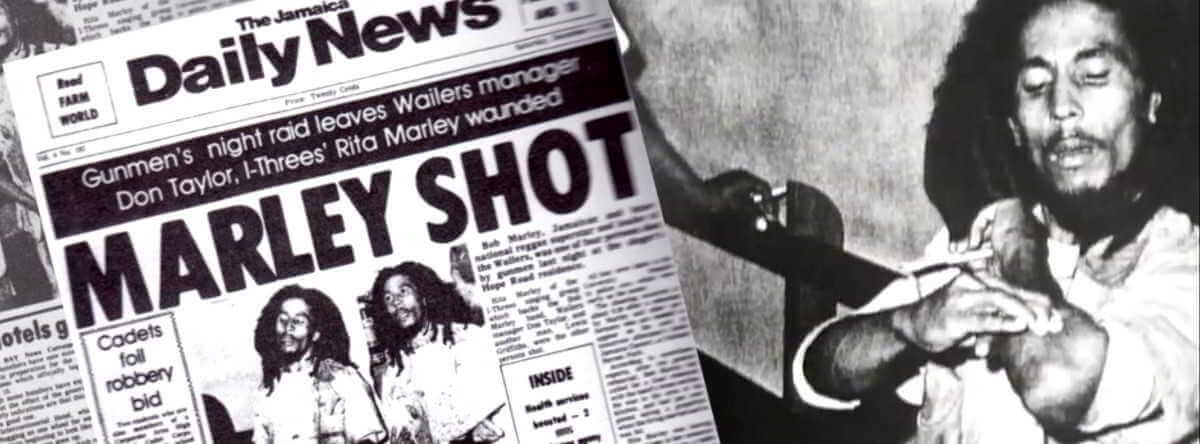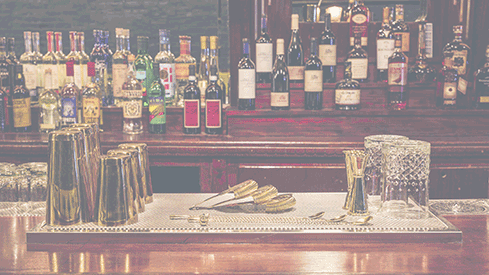
Robert Nesta “Bob” Marley was born on this date in the rural village of Nine Mile, St. Anne Parish, Jamaica. He rose from desperate beginnings to become the first and most popular rock music performer from the 3rd World. Son of an English white father, then 60 years old, and an Afro-Jamaican black mother, then 18, Bob was different from the get go, and it made life tougher, not easier. His father was a plantation overseer who provided little more than financial support to his family, and he died when Bob was 10. Bob’s mother took up with the father of his school friend Neville “Bunny” Livingstone, later known as Bunny Wailer. Bunny introduced Bob to the guitar and then played music together in primary and junior high school. When Bob was 12, the two families moved together to Kingston’s Trenchtown, one of the city’s poorest neighborhoods. Though economically impoverished, Bob was surrounded by music – Trenchtown was known as the Motown of Jamaica. In addition to native sounds like calypso, ska, rocksteady and reggae, Bob listened to radio broadcasts from the US of Elvis, Ray Charles, the Drifters and Fats Domino. Bob and Bunny were introduced to Peter McIntosh, later Peter Tosh, and in 1963, they became the core of the Wailers.

Bob Marley – Bunny Wailer – Peter Tosh
The Wailers immediately became popular on the island, but struggled financially. When 3 of the members left the group, even the core members drifted apart. In 1966, Bob married Rita Anderson, and they moved for a short time to Wilmington, DE, where his mother then lived. He worked for DuPont as a lab assistant, and on the Chrysler assembly line. Eight months later, the Marleys returned to Jamaica and Bob reunited the Wailers with Bunny and Tosh. It was around this time that Bob became interested in his spiritual life. Raised Roman Catholic, he was attracted to the Rastafarian movement. Both religious and political, the Rastafarianism began in Jamaica in 1930s and drew its beliefs from many sources, including Jamaican nationalist Marcus Garvey, the Old Testament, and their African heritage and culture – not to mention the sacramental use of ganja, and the proscription against cutting the hair.

In the late 60s, Bob and the Wailers had some success, a few local hit songs. Bob also worked as a pop singer, and with Johnny Nash, whose recording of Bob’s song “Stir It Up” became a hit in the US and Great Britain. Bob also worked on a movie soundtrack in Sweden with Nash. The group’s breakthrough came in 1972, when they landed a contract with Chris Blackwell’s Island Records. They recorded their first full album, Catch a Fire, and toured Britain and the US in support of it, opening for Bruce Springsteen and Sly & The Family Stone. They quickly released a second album, Burnin’ featuring “I Shot the Sheriff”. Eric Clapton’s cover the following year became a US #1.
During this period, Blackwell gifted his Kingston residence and company headquarters at 56 Hope Road (then known as Island House) to Marley. Housing Tuff Gong Studios, the property became not only Marley's office, but also his home.

In 1974, the Wailers were scheduled to open seventeen shows in the US for Sly and the Family Stone. After four shows, the band was fired because they were more popular than the acts they were opening for. The Wailers broke up in 1974, before the 1975 release of their 3rd album, Natty Dread, and Bob, Bunny and Tosh then pursued solo careers.
Politics was rearing its ugly head in Jamaica by this time, with frequent violent skirmishes between supporters of the government’s socialist party and the right wing opposition. Bob was considered a supporter of the former, based on the tenor of some of his songs like “Revolution” and “Rebel Music (3 O’Clock Roadblock)”.
Bob Marley & The Wailers toured again in 1975, and “No Woman No Cry” became a Top 40 hit. The following year, Rastaman Vibration was released and for the first time Bob had an album in Billboard’s Top 10, peaking at #8, with “Roots, Rock, Reggae” at #51 on the Hot 100.
On December 3, 1976, two days before he was scheduled to appear at Smile Jamaica, a free concert organized by Prime Minister Michael Manley to try and ease the tension between the warring political groups, Bob survived an assassination attempt, suspected to have been politically motivated, when gunmen broke into his home and shot the place up. Bob had minor wounds to his arm and chest; Rita had a bullet burrow between her scalp and skull; and the group’s manager, who got between Bob and a gunman, was hit 5 times. Incredibly, all survived, and Bob played the concert as scheduled. "The people who are trying to make this world worse aren't taking a day off. How can I?"

Bob left Jamaica, landing in London, where he would spend two years in exile. He recorded Exodus and Kaya with UK singles "Exodus", "Waiting in Vain", "Jammin’", "One Love" and “Is This Love”.
While in England, in 1977, Bob injured his big toe playing soccer. A minor injury, but it did not heal, and on examination cancerous cells were discovered. He refused recommended amputation on religious grounds.
Marley returned to Jamaica in 1978. He released 3 more albums, the last being Uprising including “Redemption Song”. The Confrontation album was release posthumously and contained previously unreleased material or single available only in Jamaica, like “Buffalo Soldier”.
The cancer in Bob’s toe was metastasis from malignant melanoma, that would go uninvestigated and undiagnosed until it was too late. Eschewing traditional medical treatment, Bob would eventually go to Germany for non-conventional holistic care. He died in Miami, FL, in 1981, as he attempted a last return to Jamaica.

In 1984, Island Records released Legend, a compilation of Bob Marley’s greatest hits and the best-selling reggae album of all-time, with over 15 million copies sold in the US and an estimated 25 million copies sold globally. In 2003, the album was ranked number 46 on Rolling Stone magazine's list of the 500 greatest albums of all time. As of December 2015, it had spent a total of 393 nonconsecutive weeks on the Billboard 200 album chart—the fourth longest run in history.
Bob Marley has now sold over 75 million albums worldwide. He was inducted into the rock HOF in 1994.
